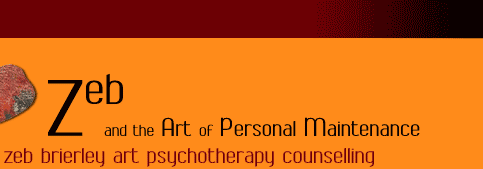| |
Understanding Art Therapy?
· One picture can provide a means to express not
only more than one emotion, but opposing emotions all in the same space
· As image is not our usual form of conveying something, it can
break through well developed modes of expression ie verbal communication
· Verbal means of expression being linear in construct, can make
it difficult to express particular paradoxes of feelings and thoughts-
‘A picture tells a thousand words’
· Externalising the problem creates a space for people to see themselves
as separate from the problem and therefore gain objectivity and new perspectives
through the distance created
· The safety offered through the process of being able to separate
from the threatening material can allow for integration of it
· Art therapy is a therapeutic intervention that can suit a wide
range of the population as it does not require artistry, since process
is more important than product

|
How Art Therapy Works
The therapeutic impact of art operates on a number of levels.
Through:
· colours chosen, their meaning and impact on user
· actual doing of it- soothing and cathartic effect
· impact of the materials themselves eg. clay has a different
impact to the use of paint
· content of picture
· the metaphoric importance of symbols used to express certain
themes
Personal themes and issues expressed through the use of colour, shape
and image can be:
· re-engaged with
· explored for greater insight
· re-arranged
· soothed due to the cathartic nature of getting something out
on paper
· shared as concrete evidence, therefore giving a sense of validation
of an internal experience that has been either discomforting or threatening
· expressed without a need for words when it’s been too
painful
|



